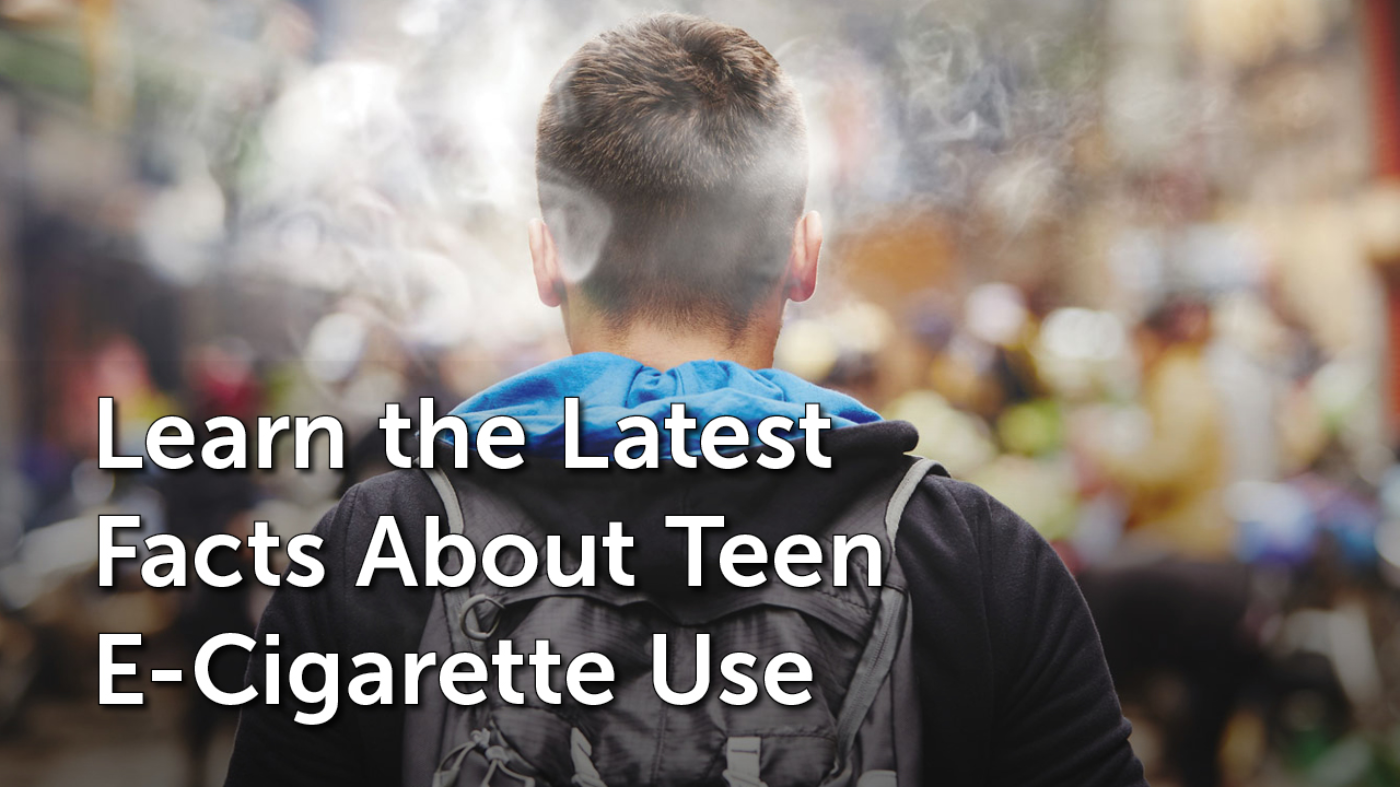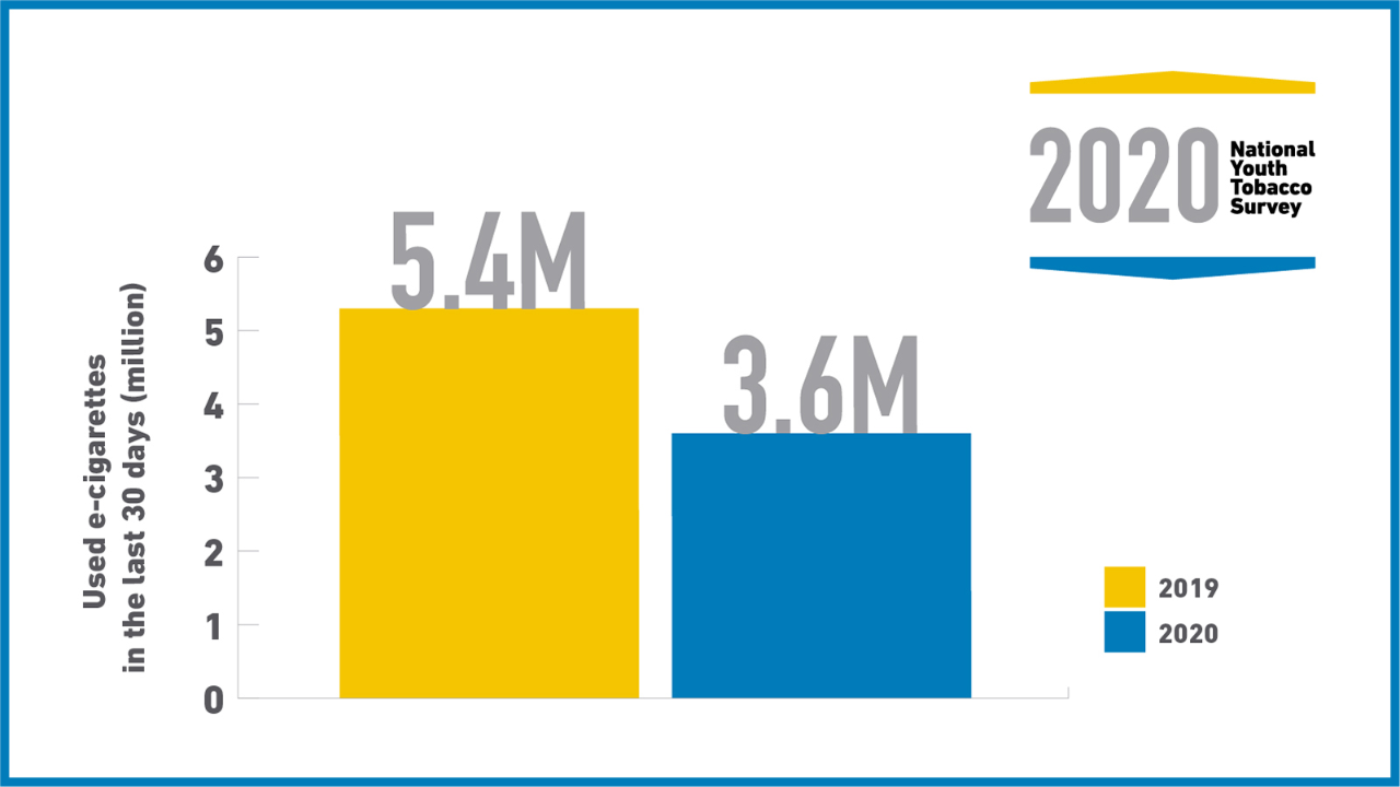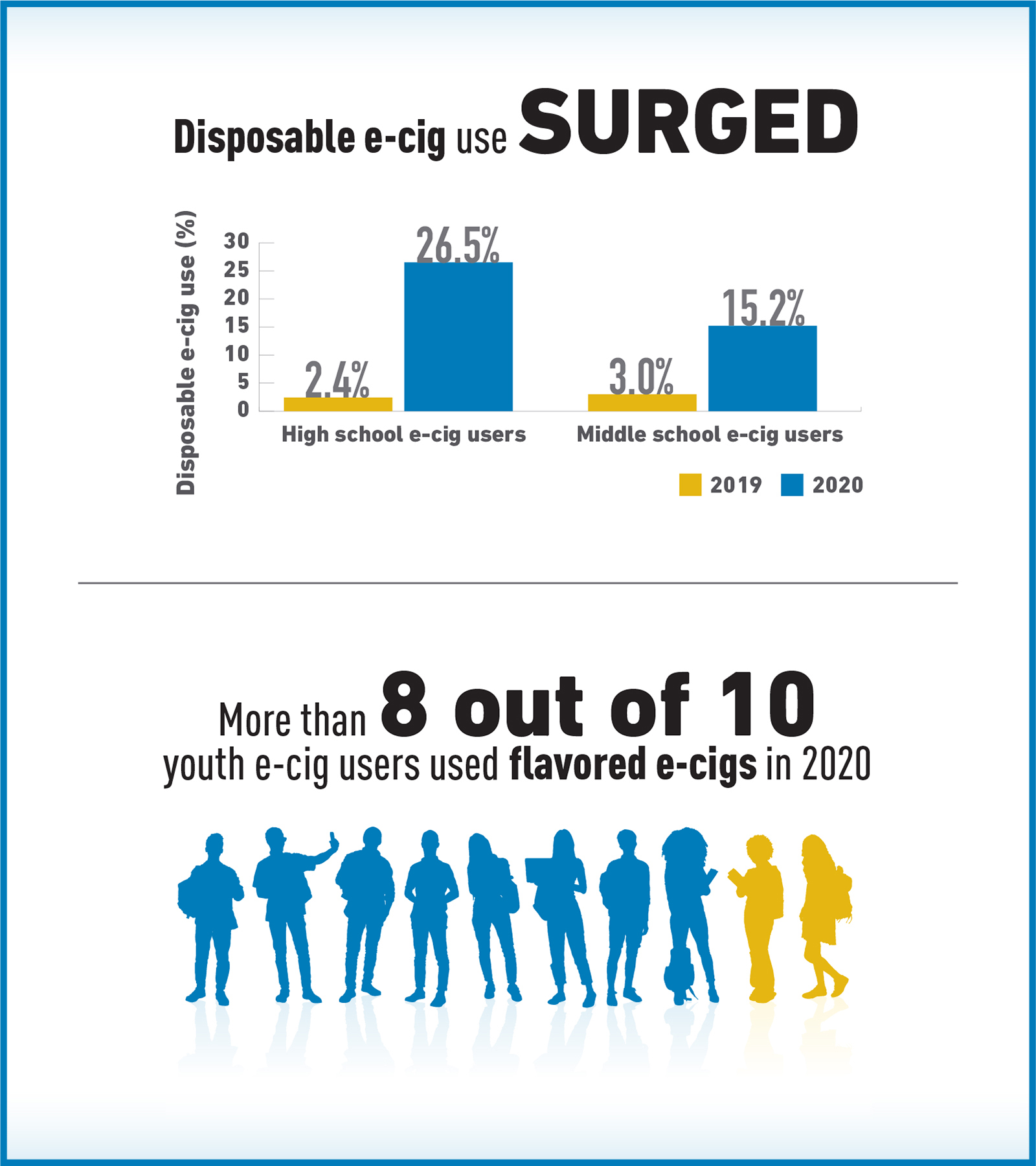Youth believe that e-cigarette use is common among their peers. In 2020, about 60 percent of youth said they’d seen someone use an e-cigarette in or around their school. Teens also shared where they saw this happening:
- In a bathroom or locker room (38 percent)
- Outdoors on school grounds (35 percent)
- Inside a classroom (23 percent)
- Some other indoor area (20 percent)
Teens can be very responsive to facts about e-cigarettes. These interactive lesson plans on e-cigarette health risks for middle and high school provide informational content tailored for classroom and remote learning in English and Spanish. You can also use these resources to deepen your knowledge before having an important conversation with a teen about e-cigarettes. Please also consider including free quit resources in your school’s e-cigarette response policies, as students who use in school may be struggling with addiction.
FDA is working hard to take action against illegal e-cigarette products that appeal to, and are accessible to, our children. In early 2020, we issued a policy prioritizing enforcement against flavored, cartridge-based e-cigarettes, such as certain flavored versions of the popular Juul brand product. In response to the recent uptick in youth use of disposable e-cigarettes, we’ve notified several manufacturers, including the makers of Puff Bar, to remove their products from the U.S. market. Also, e-cigarette makers recently had to meet a critical September 9, 2020 deadline to submit scientific applications to FDA. We are diligently evaluating these applications and will only authorize e-cigarettes to stay on the U.S. market if the science proves that their sale is appropriate for the protection of public health. To determine this, FDA considers the risks and benefits to the U.S. population as a whole, including users and nonusers. Might current users of more deadly tobacco products switch to these products? Would the sale of these products cause current nonusers to start using tobacco? In addition to evaluating scientific applications, FDA will continue to enforce the new minimum age of 21 to purchase tobacco products.
The combination of all these efforts and factors may have contributed to this year’s decline in youth tobacco use, but with 3.6 million teens still using e-cigarettes, our work to protect young people from these highly addictive products is not done. FDA will continue to use all of the tools in our regulatory toolbox to address the public health crisis of youth e-cigarette use.
—Kathy Crosby is the Director of Communications at FDA’s Center for Tobacco Products. Learn more at www.fda.gov.


